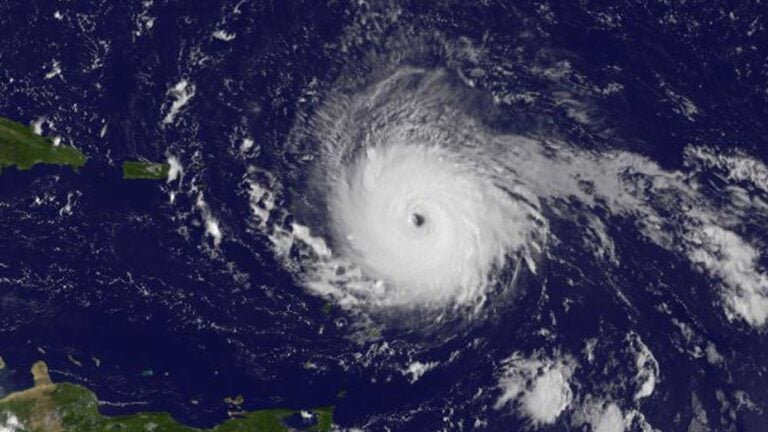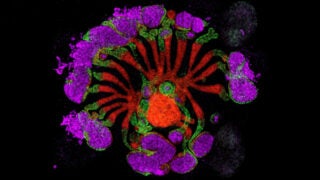
This visible light image of Hurricane Irma as seen from space. (Photo/NASA from the NOAA GOES Project)
Two huge storms in two weeks — but are they entirely ‘natural disasters’?
People didn’t cause Harvey or Irma directly, but where and how we live affects the level of devastation left behind
Hurricane Irma is barreling across the Caribbean into Florida as a record-setting storm just after Harvey hit and drenched Texas and Louisiana. And scientists warn that with global warming, there will be many more such storms in the future.
But is Mother Nature entirely to blame? USC’s Andrew Lakoff thinks not.
“These catastrophes are too often understood only as ‘natural disasters,’ which implies that we are powerless in the face of the magnitude of the event. In fact, they are ‘human-natural disasters,’” said Lakoff, an associate professor of sociology and anthropology at the USC Dornsife College of Letters, Arts and Sciences. “We need to focus on how we have become more vulnerable to them.
“In the case of Hurricane Harvey, critical attention should focus on the process of urban development in flood-prone areas, as well as the failure to account for climate change in calculating the likelihood of a catastrophic storm.”
In the wake of big storms, the response is focused on immediate needs like rescuing survivors and providing aid. Lakoff suggests a longer-term focus, too.
“Preparedness for these kinds of disasters requires a longer-term reflection on mitigating vulnerabilities — again, this includes how we build in cities, but also dealing frankly with the increasing climate risks we continue to generate,” he said.
And we need to expect more big storms, too.
“Harvey and Irma are the kinds of storms that we expect more of as the globe warms under the influence fossil fuel burning,” said Julian Emile-Geay, USC Dornsife associate professor of Earth sciences. “While there has always been — and will always be — weather, the emerging science of weather attribution suggests that this kind of event is more likely as a result of human activities.”
The reason: A warmer atmosphere can hold more moisture, which is released by storms in a violent manner, overcoming the capacity of natural and man-made land surfaces to absorb the rain.
“Harvey also highlights that wind isn’t always the greatest threat a hurricane brings,” Emile-Geay said.
“The largest damage due to tropical cyclones is actually water-related: either rainwater falling from the sky or seawater surging inland — often both.”



